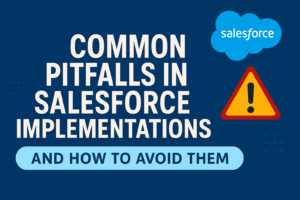BLOG
How to Improve your Marketing Strategy
To the well-trained eye, sales and marketing are two halves of the same coin. Though stereotypes would have us believe that all salespeople care about is numbers and all marketers care about is the message, the truth is that these two departments share a lot in common and are really part of the same strategy.
A good sales and marketing strategy employs tactics from both departments to create a strong message that answers buyer’s questions and encourages them to inquire further. Here are some great sales strategies that you can steal to improve your marketing strategy and make it a little more like sales.
Remember: The goal is to be “like” sales without being too much like sales. Do not compromise the effectiveness of your lead nurturing campaigns in an effort to drive sales. You still need to court your leads and show them that your company cares for them and wants to help.
Forecasting
When salespeople forecast their projected revenue for the year or quarter, they’re projecting their goal, deciding how much money they’re going to try and make by the deadline. In a similar sense, marketers need to be able to forecast as well, although instead of forecasting leads, they’ll be forecasting the number of solid leads.
While forecasting, do plenty of research to identify the best marketing practices that have generated the strongest leads within your company. Look at your marketing automation analytics and go back over the trade shows and other events you attended last year. What worked and what didn’t? What got you the strongest leads? Being able to show how certain marketing processes lead to sales will convince upper management to contribute more to the marketing team’s budget.
Employ both artistic and scientific strategies
There have been hundreds of books written about “the science of sales” and how salespeople can implement a simple formula to become better salespeople. Do these strategies work? Many of them do, depending on what is being sold and what the market is like.
Many marketers tend to treat marketing as if it were an art form and less of an exact science, but really, it’s sort of a mix between them.

Use the best metrics
If you’re using marketing automation (if you aren’t, you should be), then you know that you often get hit with a lot of data every day. From email open rates to the number of new Twitter followers to the bounce rate on your website, it can sometimes feel overwhelming. Marketers often find it difficult to comprehend all the data that comes at them and translate it into plain, old English.
To better interpret data, it’s important to know hard data from soft data. Hard data shows direct correlations, meaning that when you do Action B, Reaction B happens. These are numbers that sales teams can work with and actions that can lead to results. Other departments can use this data and adjust their strategies accordingly.
Soft data is only relevant to the marketing team. Information such as brand awareness and ad impression rates are great statistics for marketing teams, but they usually don’t help other departments, especially sales.
Salespeople will often use hard data to make sales, showing customers how using their products or services will have direct correlations. You as a marketer should be doing the same. Convince consumers of the relevancy of your data, and you have a better chance of passing on a solid lead to your sales team.
Be an honorary salesperson
This is something all people on your marketing team should try every so often. For a day, a half day or even just an hour, all of your marketing people need to sit in on a sales call and hear for themselves what the customers are saying and asking.
Most often in marketing and sales, there is a disconnect between what works and what doesn’t, and most marketing and sales teams tend to blame each other. When salespeople say that the leads aren’t going anywhere, marketers say the leads are good but the sellers are bad. When sales suggests a change in lead scoring, marketers say the data doesn’t lie.
It doesn’t matter who’s right; what matters is that these two teams aren’t understanding each other. To remedy this, marketers consider salespeople’s perspectives for a bit and hear what customers are actually saying. This will give marketers a better idea about what information consumers need, how they prefer to get their information and how best to contact them.
Marketers also need to know the type of language salespeople are using when they talk to customers. This will likely influence how they word emails or the types of blog posts they write later.
Salespeople should understand that marketing is not just about Facebook updates and glossy images. There’s a lot that goes into attracting buyers, and it’s not as easy as some salespeople might believe it to be.
The best way your marketing team can support your sales team is by communicating often. Because your sales team works so closely with consumers, they know what questions pop up most frequently and which processes need to be explained more than once. With this knowledge, marketers can bring consumers down the sales funnel faster, improving their lead nurturing tactics and making the final sale easier for salespeople to complete.
Which of these tactics do you think you’ll try? Let us know in the comments below.











